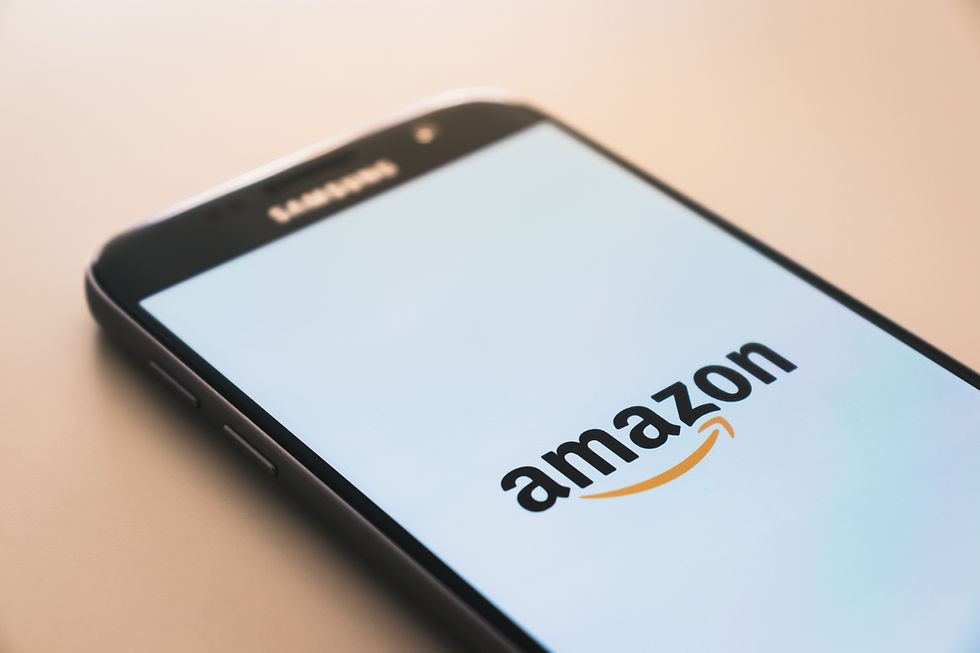Should I use Amazon Ads, Amazon Organic listings - or both?
- Peter Jarvis
- Aug 21, 2024
- 6 min read
Amazon is a giant marketplace where countless sellers compete for consumer attention. If you're an eCommerce business owner looking to maximize your sales on Amazon, it's crucial to understand the difference between leveraging Amazon Ads and relying solely on organic selling. As an Amazon Ads marketing expert agency, we're here to break down the distinctions, benefits, and strategic advantages of Amazon Ads compared to traditional organic selling methods. Here we are trying to lay out how Amazon Ads can transform your business and boost your sales vs doing this organically.
Understanding Amazon's Ecosystem
Before diving into the specifics, it's essential to grasp Amazon's ecosystem. Amazon provides a platform where sellers can list their products, manage inventories, and interact with customers. Within this ecosystem, there are two primary ways to sell products:
Organic Selling: This involves listing your products on Amazon and optimizing your listings to rank higher in search results organically.
Amazon Ads: This encompasses a range of paid advertising options designed to increase product visibility and drive sales.
Organic Selling on Amazon
Organic selling refers to the practice of optimizing your product listings to achieve higher rankings in Amazon's search results without paid advertising. This method relies heavily on several key factors:
1. Product Listing Optimization
Optimizing your product listings involves crafting compelling titles, descriptions, bullet points, and using high-quality images. Effective keyword usage is critical here, as it helps your products appear in relevant search results.
Title: Should be concise yet descriptive, including relevant keywords.
Bullet Points: Highlight key features and benefits.
Product Description: Provide detailed information to persuade potential buyers.
Images: High-quality images showing different angles and uses of the product. Amazon also has so-called "A+ content" where you can introduce higher quality images or video.
2. Customer Reviews and Ratings
Positive reviews and high ratings play a significant role in organic ranking. They build trust and influence purchasing decisions. Actively managing customer feedback and providing excellent customer service can enhance your reputation and boost your organic rankings.
3. Competitive Pricing
Pricing strategies are vital. Competitive pricing can improve your chances of winning the Buy Box, a coveted spot that significantly impacts sales. Monitoring competitor prices and adjusting your own accordingly is essential.
Here's what the Buy Box is:

4. Fulfillment Method
Using Fulfillment by Amazon (FBA) can give your products a competitive edge. FBA products often enjoy better visibility and customer trust due to Amazon's reliable shipping and customer service.
Amazon, 'natch, favours slightly its own service.
5. Inventory Management
Proper inventory management ensures that your products are always available for purchase. Stockouts can negatively affect your rankings and sales and should be avoided at all costs
The Limitations of Organic Selling
While organic selling has its merits, it also comes with limitations:
Slow Results: Achieving high organic rankings can take time, often months or even longer.
High Competition: Popular product categories are fiercely competitive, making it difficult to stand out.
Algorithm Changes: Amazon's search algorithm is constantly evolving, which can impact your rankings unexpectedly.
Limited Visibility: Without initial visibility, even the best-optimized listings can struggle to attract attention.
The Advantages of Amazon Ads
In contrast to organic selling, Amazon Ads provides a more immediate and controllable way to drive traffic to your product listings. Here are some of the key advantages of using Amazon Ads:
1. Increased Visibility
Amazon Ads positions your products prominently in search results and on product detail pages. This increased visibility can lead to higher click-through rates and conversions. Sponsored Products, for example, appear at the top of search results, ensuring that your products are seen by a larger audience.
2. Targeted Advertising
Amazon Ads allows you to target specific keywords, product categories, or even competitor products. This precise targeting ensures that your ads are shown to relevant audiences, increasing the likelihood of conversions.
3. Performance-Based
Amazon Ads operates on a pay-per-click (PPC) model, meaning you only pay when someone clicks on your ad. This cost-effective approach allows you to control your advertising spend and measure the return on investment (ROI) more accurately.
4. Data-Driven Insights
Amazon provides robust analytics and reporting tools that allow you to track the performance of your ads in real-time. You can analyze metrics such as impressions, clicks, conversions, and sales, enabling you to refine your advertising strategies for better results.
5. Enhanced Brand Visibility
In addition to driving sales, Amazon Ads can enhance your brand's visibility and reputation. Sponsored Brands (formerly Headline Search Ads) showcase your brand logo and a custom headline, creating a strong brand presence on the platform.
Types of Amazon Ads
Amazon offers several advertising options, each with its unique benefits:
1. Sponsored Products
Sponsored Products are keyword-targeted ads that promote individual product listings. They appear in search results and on product detail pages, making them highly effective for driving sales.
2. Sponsored Brands
Sponsored Brands, previously known as Headline Search Ads, promote your brand and a collection of products. These ads appear at the top of search results and feature your brand logo, a custom headline, and multiple products.
These are the most popular and you can find out more about Sponsored Ads on Amazon's site here
3. Sponsored Display
Sponsored Display ads target customers both on and off Amazon, reaching them on third-party websites and apps. These ads are ideal for retargeting and reaching audiences who have shown interest in your products.
4. Amazon DSP (Demand-Side Platform)
Amazon DSP allows you to programmatically buy display and video ads across Amazon's sites and third-party networks. It's a powerful tool for advanced targeting and reaching specific customer segments.
However, there is significant minimum spend here so only suitable for established advertisers.
Comparing Costs: Amazon Ads vs. Organic Selling
Understanding the cost implications of Amazon Ads versus organic selling is crucial for eCommerce business owners:
Organic Selling Costs
Product Listing Optimization: Time and resources spent on optimizing titles, descriptions, and images.
Customer Service: Managing reviews and ratings, responding to customer inquiries.
Fulfillment: Costs associated with FBA or other fulfillment methods.
Price Adjustments: Regularly monitoring and adjusting prices to remain competitive.
Amazon Ads Costs
Ad Spend: Budget allocated for PPC campaigns.
Bid Management: Adjusting bids based on performance and competition.
Creative Development: Designing compelling ad creatives for Sponsored Brands and Display ads.
Monitoring and Optimization: Continuous analysis and adjustment of campaigns to improve performance.
Strategic Recommendations for eCommerce Business Owners
How do I combine the two?
As an Amazon Ads marketing expert agency, we recommend the following strategies to maximize your success on Amazon:
1. Always run Organic and Paid Strategies
Integrating both organic and paid strategies can yield the best results. Use Amazon Ads to drive immediate traffic and sales while continuing to optimize your product listings for long-term organic growth.
2. Monitor and Adjust Campaigns Regularly
Regularly review your ad performance and adjust bids, keywords, and targeting to optimize results. Use Amazon's analytics tools to gain insights and make data-driven decisions.
3. Invest in High-Quality Creatives
Compelling ad creatives can significantly impact your ad's performance. Invest in high-quality images, engaging headlines, and clear, persuasive ad copy.
4. Leverage Advanced Targeting
Use Amazon's advanced targeting options to reach specific customer segments. Experiment with different targeting strategies to find the most effective combinations.
5. Analyze Competitor Strategies
Monitor your competitors' ads and strategies to stay ahead of the competition. Identify gaps and opportunities to differentiate your products and capture market share.
6. Focus on Customer Experience
Providing excellent customer service, managing reviews, and ensuring timely fulfillment can enhance your brand's reputation and drive repeat business.
Conclusion
For the best growth rates, understanding the differences between Amazon Ads and organic selling is essential for eCommerce business owners. While organic selling relies on long-term optimization and customer satisfaction, Amazon Ads offers immediate visibility and targeted advertising opportunities.
By combining both strategies, you can maximize your sales potential and achieve sustainable growth on Amazon. As an Amazon Ads marketing expert agency, we're here to guide you through the process, helping you harness the power of Amazon Ads to transform your business and reach new heights of success. Whether you're just starting or looking to scale your operations, Amazon Ads can be a game-changer in your eCommerce journey.



Комментарии